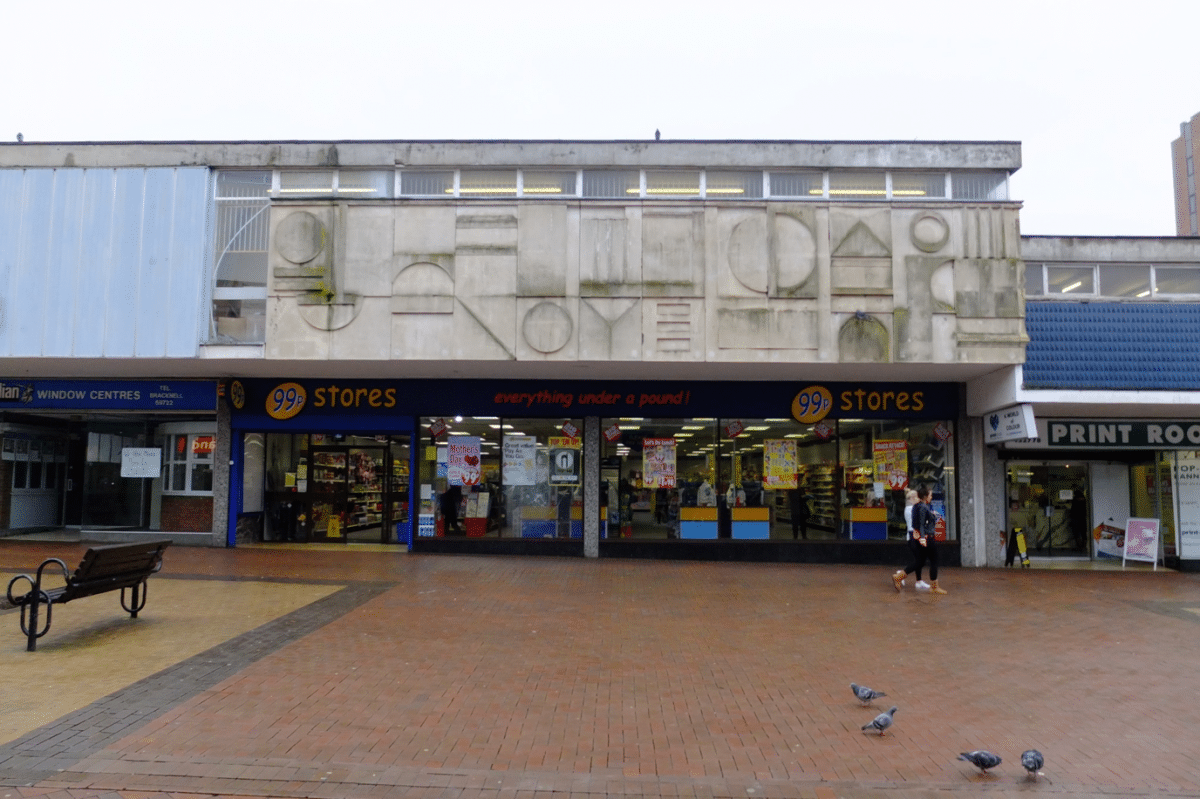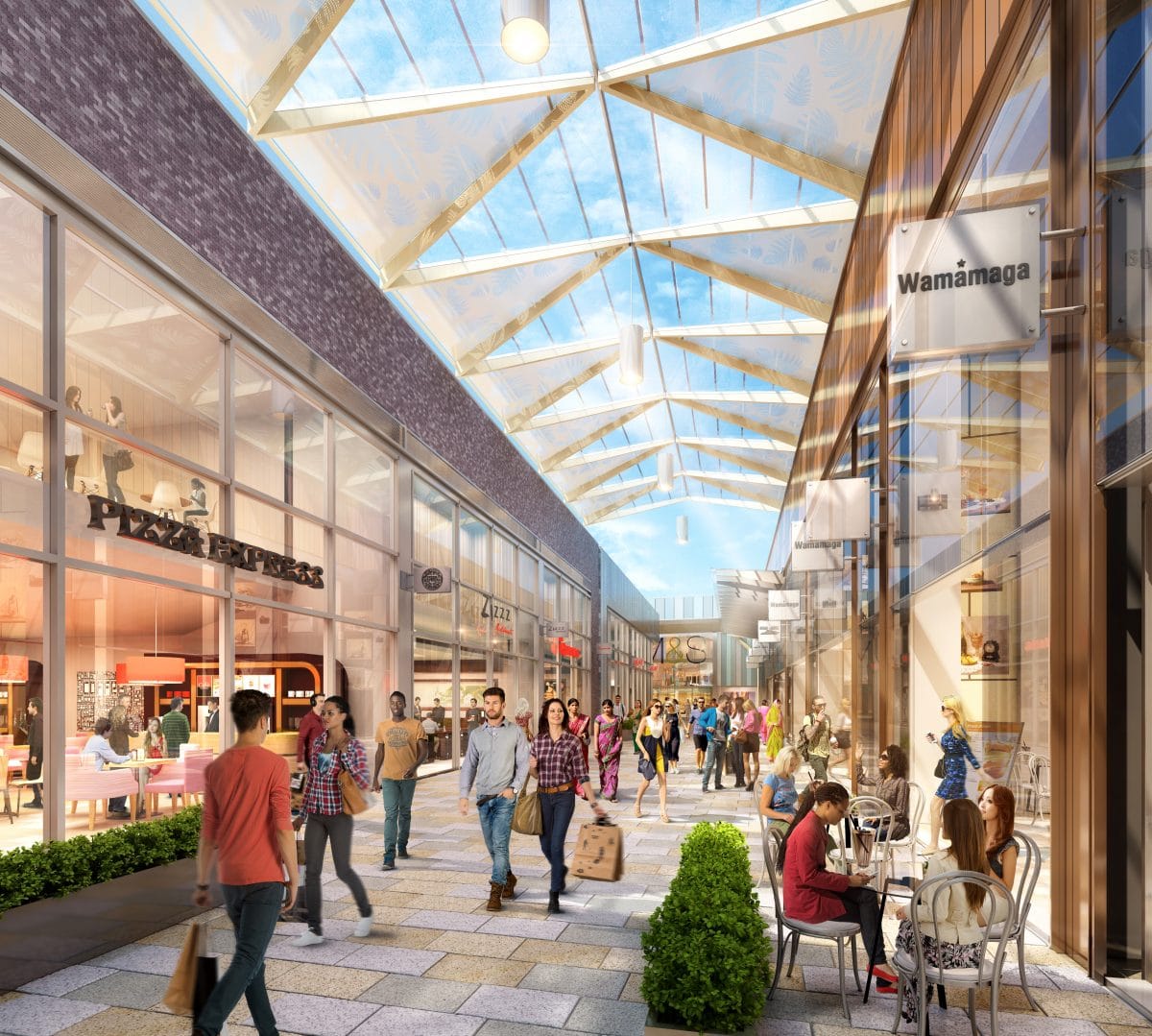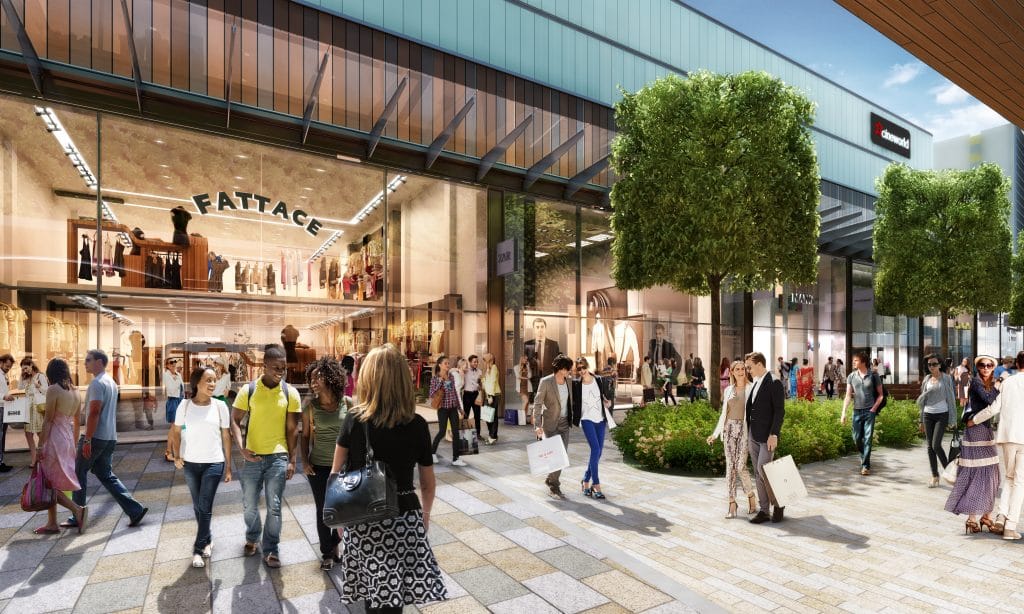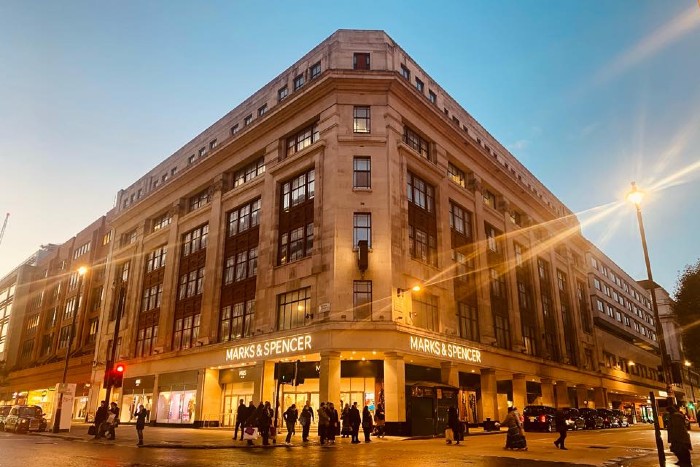An hour along the motorway outside of London and the city‘s iconic blend of historic architecture and sleek glass office blocks has long faded from the rear-view mirror, substituted instead by sea of grey and pebble-dash buildings that even builders from the 1970s would wince at.
This is a view that has plagued post-war “New Towns” since their inception in the 1950s.
Bracknell was designated as a New Town in 1949, planning to house 25,000 new people who would live and work in the area.

Although the Lexicon‘s catchment area now nudging one million people, very little else in the town centre had changed since it was built.
The lack of attractive retail and leisure offerings meant that despite its affluent surrounding areas, Bracknell entered a downward spiral. No footfall meant no money, which meant no retailers, which meant no development.
That was until the Bracknell Regeneration Partnership, including Bracknell Forest Council, Schroder UK Real Estate Fund and Legal & General Capital decided to make a major investment.

£240 million was set aside to demolish, rebuild and reconfigure the concrete ocean.
The result is a one million sq ft retail park, which has seen the town‘s centre replaced largely by a building site for the last three years, demonstrating the council‘s commitment to redevelopment.
The first phase, according to head of development Simon Russian and retail leasing manager Richard Poyser, was vital in proving to both customers and retailers the town held potential.
In 2011, Waitrose opened and suddenly the surrounding area‘s affluent shoppers had a reason to stay in Bracknell.
 Fast forward five years, and as Poyser points out, “the place is unrecognisable”. Construction workers are now making the final push before the official opening where a modern, elegant retail space is revealed.
Fast forward five years, and as Poyser points out, “the place is unrecognisable”. Construction workers are now making the final push before the official opening where a modern, elegant retail space is revealed.
Immediately apparent is the aesthetic theme, incorporating vast wooden structures and Europe‘s largest green wall, it is a conscious and direct response to its concrete beginnings. The concept of “bringing the forest to Bracknell” is a key component to the development‘s feel.
Large open spaces are dotted about the site, which is laid out to represent a basic figure of eight. These include both benched seating areas complete with trees, and grand steps with blooming plantation, all in a stone‘s throw of the flagship retailers, like upmarket department store Fenwick, which bookend the space.

Beneath these fascias the retailers themselves have been updated. Yesterday another six leading retailers including, Joules and Timberland, were announced to have signed a lease at the new site, bringing the total space filled to 92 per cent.
What differs from most retail sites is that almost all of these retailers come under single ownership, meaning asset management is town-wide which in turn gives enhanced levels of control — and the results are clearly apparent.

As seen with the snowballing effect since Waitrose and phase one of the development, it will serve to drive urban regeneration far beyond the realms of retail, and is likely to become the model for redevelopment in the countless concrete vistas across the UK.
Click here to sign up to Retail Gazette‘s free daily email newsletter


















